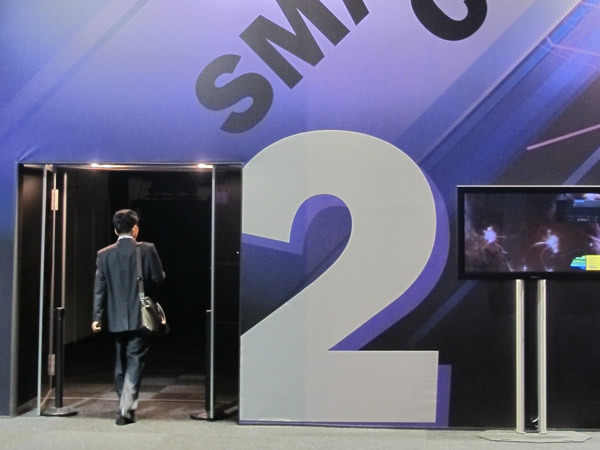There were 58 applications for the award, 20 shortlisted cities and 6 finalists.
Cities had to show concrete results of projects started since 2010 as well as a track record of innovation and most importantly an interconnected innovation eco-system approach.
The criteria for the award were places seen as:
- Innovative – shown in both processes and the impact
- Inclusive – illustrating citizen involvement and engagement
- Inspiring – by attracting talent, funding, investment and partners
- Interactive – encouraging open communication between key players
- Integrated – maximising a holistic viewpoint involving people and place
A number of themes emerged:
- Several highlighted evidence of their quadruple helix approach – the link between universities, the public and private sectors and citizens’ involvement, which was a pre-condition to win the prize.
- Many proposal highlighted open data applications, but initiatives focusing on these alone were not deemed to be systemic even though several involved cities throwing out calls for proposals which were taken up by start-ups, SMEs or enthusiasts to develop apps. Open data is now regarded as becoming mainstream.
- There were various examples of participative crowd-sourcing schemes to generate ideas to find solutions to urban problems ranging from crime prevention, to energy saving to dealing with traffic problems. For instance applications to find available car parking spaces since a large proportion of congestion is people looking for parking spaces.
- The energy transition was a strong theme with a number of cities using incentives and regulations in imaginative ways and with determined goals to do better than mandated reduction targets.
- some reconceptualised complete systems in the city such as structural reform in health, which empowers citizens to manage and maintain their own health and wellbeing with the help of ICT, tools. The solutions seek to deliver an advanced, personalized, connected health service based on open systems and open collaboration where the ownership, development and management is distributed, without any one stakeholder holding a monopoly position.
- Model urban development schemes were put forward mostly to act as inspiration for overall city development so becoming ‘living labs’. These typically combined incentives to develop the creative economy, eco-city thinking, new forms of mobility and co-creation.
- Cities often threw out problem solving challenges to established private companies and the world of SMEs allowing them to use the city as a test bed for innovations. This has helped many companies to prototype inventions and to use the city brand as a marketing tool.
The winner was Barcelona and the runners up Grenoble and Groningen. The finalists in alphabetical order were:
- Barcelona was nominated for introducing the use of ‘new technologies to bring the city closer to citizens’ emphasizing ‘technology for people’. This scheme took the ‘smart city’ notion much further with significant applications in public health and social services. Most applications were co-created with citizen groups and business. It also highlighted its plans to become ‘mobile world capital’ by 2018, its global networking and focus on sharing its results with other cities.
- Espoo part of the Helsinki city region was chosen for creating a strategic partnership uniting science, business and artistic creativity. The location of both Nokia and the new major game companies Rovio (Angry Birds) and Supercell (The Clash of Clans) brings these elements together naturally as does Aalto University, a unique merger of an art and design university with one focusing on science and technology and a business school.
- Grenoble was selected for investing in scientific and technological breakthroughs through synergies between public and private research, education initiatives and industrial collaboration. Close to the Alps its innovation eco-system was built up starting from hydro-electrics and then migrating over the years towards a global role in micro-electronics. Its main current project is to develop a carbon neutral ‘universal city’ around a 250ha site that should act as a model of combining SMEs, research and new forms of living.
- Groningen was elected for using new concepts, tools and processes to develop a user-centred smart energy ecosystem. Called the ‘smart energy citizen’ the aim is to shift the power in energy markets from large energy providers to groups of citizens. Helped by global crowd engineering with Groningen as the trialling ground and energy competitions to find solutions it seeks to become a benchmark city. Imaginative communications is used to foster behaviour change such as heat maps for the whole city to show where and how much energy is used.
- Malaga was proposed for its new urban regeneration model combining an open lab, new forms of mobility (electric cars) in the development of Soho Malaga where artists and creative industries people redesign an area of the city. It highlights a mixed generation approach and especially a scheme for children to act as mediators in solving difficult urban problems such as segregation.
- Paris became a finalist by opening up municipally-owned property (streets, gardens, buildings, basements, schools) to experimental innovative solutions, driven by all types of business where innovations were often encouraged by thematic calls for proposals. They start from the premise that the sum of collective intelligence outside an organisation is always greater than the knowledge within and that by opening out and exchanging information this collective intelligence can be channelled.
Two interesting issues emerged from all finalists. First they stated that the biggest obstacle to change was their own municipal institutions and the need to overcome the silo mentality. Second, they stressed the difficulties in achieving real collaboration and connectivity between the various players in order to benefit from networking.

